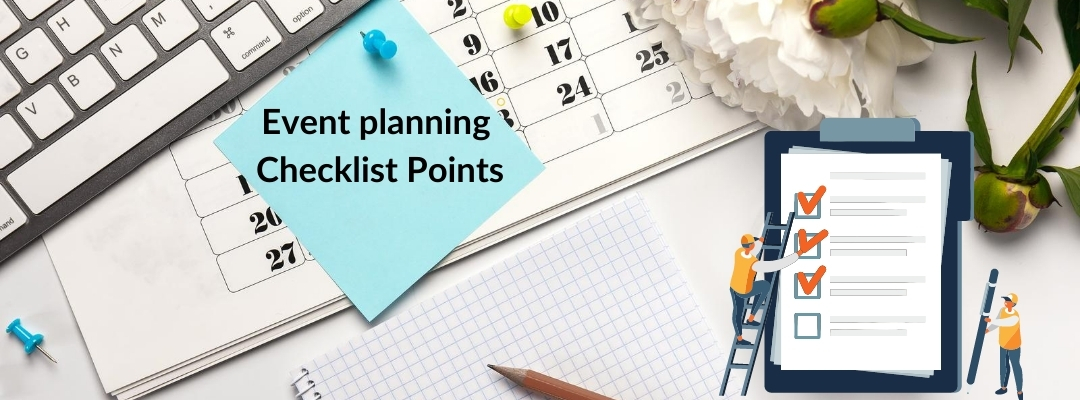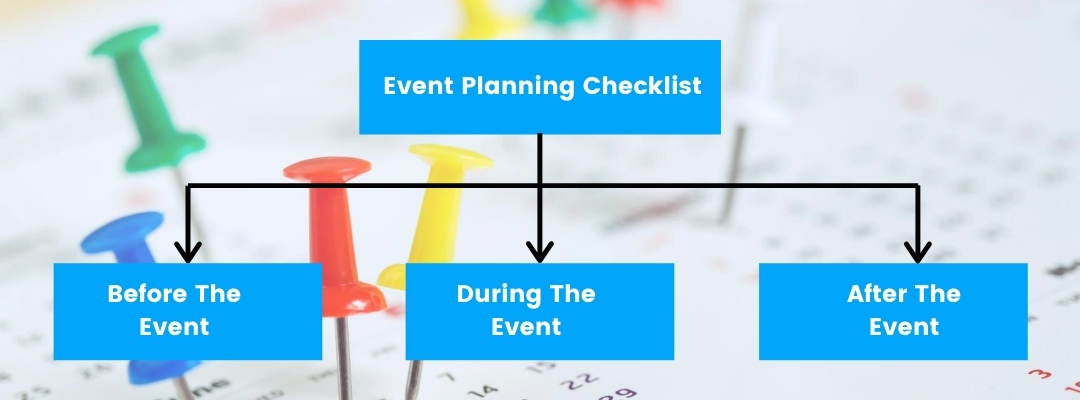- « Previous blog
-
Grow My Business
-
July 28, 2020
-
July 31, 2020
-
461
-
0
- Next blog »
Without planning and proper execution of defined strategies, you will lack in making your virtual events popular among the public or the potential attendees. Do you want to know about the virtual event planning checklist for a successful event?
Here we have researched organized an event planning checklist that you have to keep an eye on during your planning phase.

Choose and review the methodologies and technologies for your virtual event
Speaking about virtual events, planning, and evaluation of your defined strategies play a very vital role in the success of events. As for as the virtual event planning is concerned, the major thing to keep under observation is the use of such technologies and methodologies which your participants can easily adapt to.
For this reason, you must work together with the facilitators, presenters, and the rest of the event team to define objectives and plan the program in time with defined methods. This level of virtual event planning will enable the design of an individualized and interactive virtual experience, with relevant content that captures attention. Some helpful questions as a starting point of Event Planning Checklist:
- How much time does the public have to participate?
- Are they adept at new technologies?
- By which device or devices do members of my audience usually connect?
- What my public interested in learning/practicing/improving?
- Do they need to interact with each other, or can they work individually?
This initial diagnosis will permit you to determine the dynamics of the event and identify whether it will be done so synchronously (interacting in real-time over the video, audio, and chat).
Event planning checklist Key Points:

1. Identify the platform that best suits your goals
Although the tools such as Skype, Microsoft Teams, or other online preferable tool works in to transform meetings or seminars simpler, however, for more innovative and complex events you might have to choose tools like WP Event Manager Plugin to manage your platform needs. The platform Zoom addition to offering instant messaging, registration and monitoring of participants, allows you to have video calls in virtual rooms, very convenient to carry out workshops or training sessions and, with its modality of parallel work sessions, activities that require participants to be divided into groups can be a plus point.
2. Marketing Options
The next point on the event planning checklist is to search out for the marketing options that are feasible and economical too. While opting for marketing platforms, keep the essential role in mind, which is to get more attendees. There are a variety of options available out, including the most important that is digital marketing.
The must be numerous digital platforms on your event planning agenda to review and choose which one is the most convenient for your particular event promotion. You can have a look at this :
- Facebook event promotion
- Promoting event through guest posts
- Digital banners on different websites
- Paid ads on social media
3. Registrations and Tickets
Here comes one of the most important things to consider while doing a virtual event planning checklist. Registrations are very important because they provide many insights, including:
- Let you estimate the number of attendees you are going to have for your event
- Allows you to estimate the revenue generated
- Helps you in event planning agenda related to infrastructure requirements
There are multiple ways you can integrate registration into your events; however, the simple and effective one is WordPress Event Manager Plugin’s Registration Add-on as it allows easy integration and easy registration process.
Along with the registrations, you must have to put “Selling Tickets” on your virtual event planning checklist. For that, you do not need to develop any module to be integrated with your website for the desired purpose. There are plenty of plugins available out to handle this task, and we recommend using plugins because of their easy availability and working.
4. Financial Planning
Finance and technology are considered as the backbone for organizing virtual events. So, you have to pay special attention to them during your virtual event planning checklist, and execution. You have to call guest speakers, make arrangements, hire staff with you for troubleshooting during sessions and arrangements, and for all these things, you have to pay money. Now, the whole planning is executed around the goal to meet the financial requirements.
For financial analysis during your virtual event planning and execution of the event, you need an automated system to allow easy analytics. Like, WordPress Event Manager Plugin is offering its customers to have access to the visual information that shows the demand for the finance and the recovery of cost through the registrations.
5. Feedback Options
Last but not least, you must have this point on your event planning checklist. Being able to attract more attendees for your virtual events, you have to incorporate the suggestions and the feedback from your audience. By this, you can evolve and improve your virtual event planning and be able to organize events in a way that the public likes to be.
There are plenty of options available, including the best one that is allowing the customers to fill out the short survey at the end of the session, which ultimately gets you a lot of responses.
You can Structure the event planning checklist to make it better with this.

We divided the event planning checklist into 3 major sections:
- Before the event
- During the event
- After the event
In each section, we cover different categories of things. For example, in the first section, we cover “how to choose software/hardware platforms,” “how to communicate with the participants,” “what to consider in registration,” and more.
In the second section, we include categories like “during the session streaming” and “how to advocate your sponsors and exhibitors.” and others. In the final section, we describe “how to follow up with participants” and other considerations for after the event ends.
Here’s a sample of what you’ll see within the virtual event planning checklist:
1. Before the event day
- Event format planning
- Choose to Livestream, pre-record videos, or a use a hybrid of the two according to the event’s needs (this is important in deciding which software platform to use)
- Decide if the event should be extended a few more days
- Decide the content distribution strategy: whether to form all content public or restrict to registrants only
- If attendees span over an outsized geographical area, consider recording sessions and permit on-demand replay
- Streaming platform like Zoom
- Attendee interaction tool. Depending on your needs, you’ll choose a comprehensive platform just a chat-only solution like Slack
- Miscellaneous tools: emailing service (e.g. Mailchimp), caption generation, and interpreter services (if needed)
- Decide if you need high-quality A/V devices such as recording devices to filter noise/echo
- Consider that certain services may not be available in some areas (e.g. Google/Youtube/Facebook are not available in China)
2. During the event
- During session streaming
- Start every session 15 minutes earlier to check the device and network
- Prepare for and react to any disruption (e.g. violation of code of conduct, streaming cut off due to technical issues)
- Mute/unmute and disable/enable video of participants accordingly
- Collect and moderate online Q&A
- Coordinate online gamification such as a photo contest
- Start virtual meet-ups
3. After the Event
- Look for a storage service to store the archived videos
- Follow up with the participants
- Send attendee surveys to collect their feedback for the virtual experience
- Check with speakers, volunteers, and moderators and express your gratitude for their efforts in this special event
- Follow up with sponsors and exhibitors to thank them for their support during the tough time, and see if they reached their goal
Conclusion
If you haven’t kept these things on your event planning checklist for the last events, then try them out for your upcoming virtual events and observe the success rate and the customer’s feedback. There are a lot of other things to be incorporated during virtual event planning; however, we have made it a very short for our readers so that they can easily follow it and increase the chances of success for their events.
Lastly, all these points on the event planning checklist can become easier to follow if you are using WordPress Event Manager Plugin for your virtual events.

